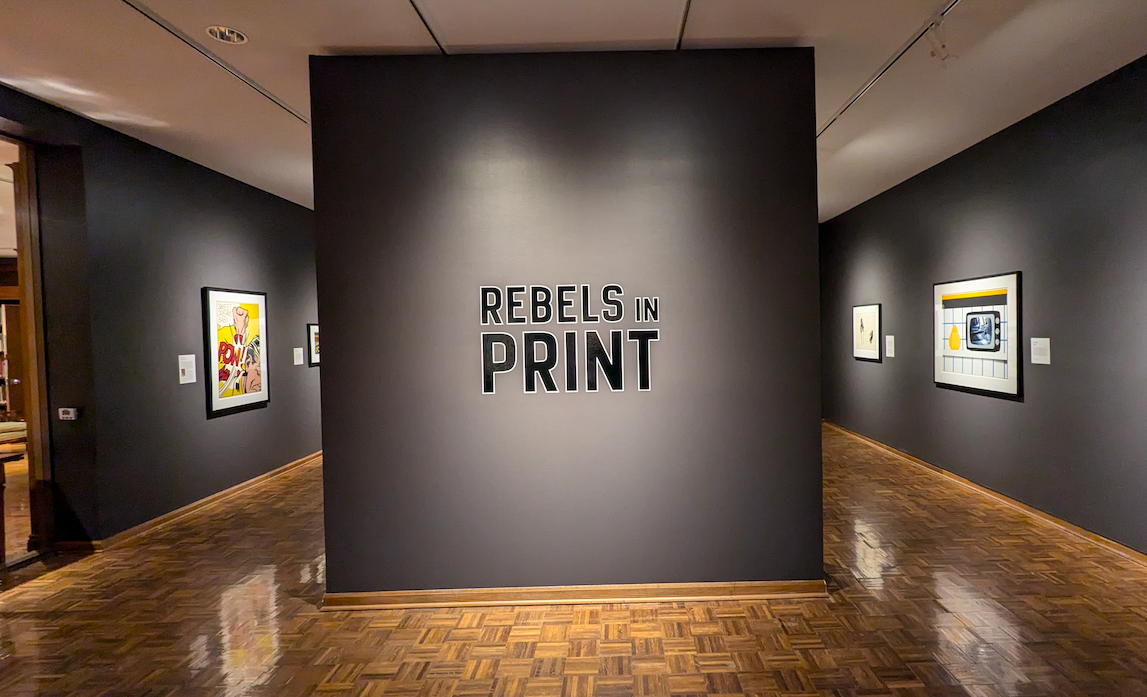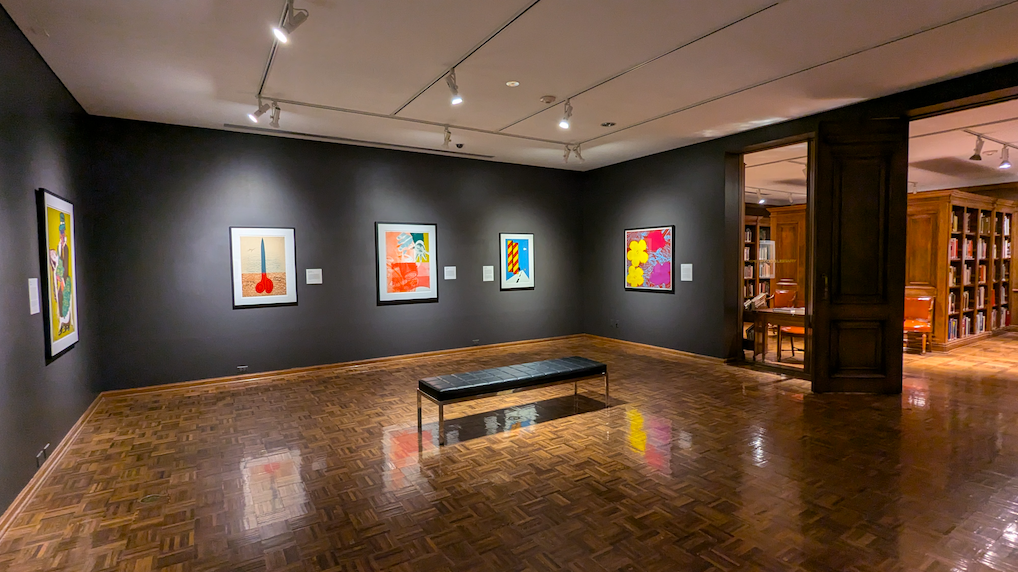‘Rebels in Print’ exhibit at the FIA shows how pop art still has a place in today’s culture
The new ‘Rebels in Print’ exhibit at the Flint Institute of Arts showcases the influential art forms of lithography and printmaking throughout the decades.

FLINT, Michigan — Art often reflects our culture, examines what’s popular, and provides insightful commentary without using any words, but with a visual context. To some viewers, certain art prompts questions, an encouragement to think or act differently, or in this case, to rebel. To rebel against the mainstream, to think twice about trends, to examine what is important and what is just not.
The latest Flint Institute of Arts (FIA) exhibit ‘Rebels in Print’ runs from Sept. 20 through January 19, highlighting 13 artworks from iconic artists and their critiques and commentary on popular culture.
Emily Legleitner is a curatorial assistant at FIA, working with the team to execute exhibitions and update the permanent galleries. Legleitner is also a printmaking artist and oversees the Flint Print Club.
“‘Rebels in Print’ features preeminent artists from the Pop Art movement of the 1960s and 1970s like Andy Warhol, Roy Lichtenstein, and Robert Rauschenberg,” she says. “These artists questioned mainstream American culture and what they critiqued as a rising trend of thoughtless consumerism, incorporating commonplace objects into their work — so much of the imagery you’ll see is of things like road signs, fruit, flowers, hand tools, scissors, and pliers, for example.”
The majority of the mediums of the exhibition are silkscreen printmaking and lithography from Andy Warhol, Roy Lichtenstein, Jasper Johns, Claes Oldenburg, Red Grooms, Richard Lindner, and even a Michigan artist, William Stolpin.

Historically used in advertising and mass media, pop artists began using these mediums in the fine art scene, says Legleitner.
“This is interesting most notably because the Pop Art movement critiqued the inflated value of mass-produced objects, so using the same modes of production harbored a lot of irony,” she says.
Part of the curatorial process for any exhibition includes research on the artists and their individual works, searching for common themes woven throughout. This was also the case for ‘Rebels in Print.’
“In this case, many of the artists tackled the same themes in their work or even collaborated with each other throughout the 1960s and 70s,” Legleitner says. “These details inform the label text and ultimately the story that the exhibition tells.”
The exhibition is especially relevant in a time period where we’re being constantly bombarded with ads, whether it’s social media ads for clothing, products, events, or even political advertisements. It’s also timely with the museum programming itself, with the Flint Print Club program launch this year.
“Pop Art is still one of the most recognized and influential art movements of the 20th century,” Legleitner says, “so just having the opportunity to put these works on view is exciting. But today, we’re in a political and social climate not dissimilar to the 1960s and 1970s, contending with division and tension driven by capitalism — so this exhibition offers insight into how artists dealt with these concerns historically.”
The Flint Institute of Arts is open Monday through Thursday from 10 a.m. to 5 p.m., Friday from 10 a.m. to 8 p.m., Saturday from 10 a.m. to 5 p.m., and Sunday from 1 to 5 p.m. Admission is free for FIA members and Genesee County residents, $10 for adults, free for children 12 and under, $8 for students with ID and seniors. Admission is free for everyone on Saturday, courtesy of Huntington Bank.







